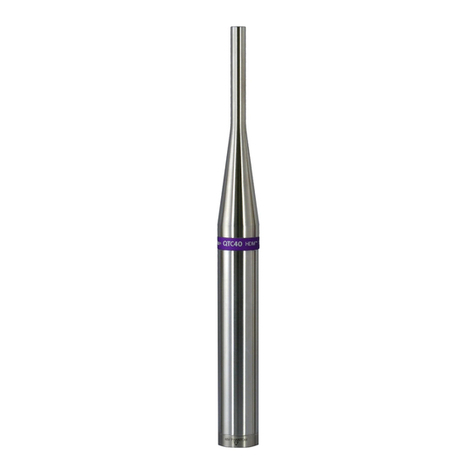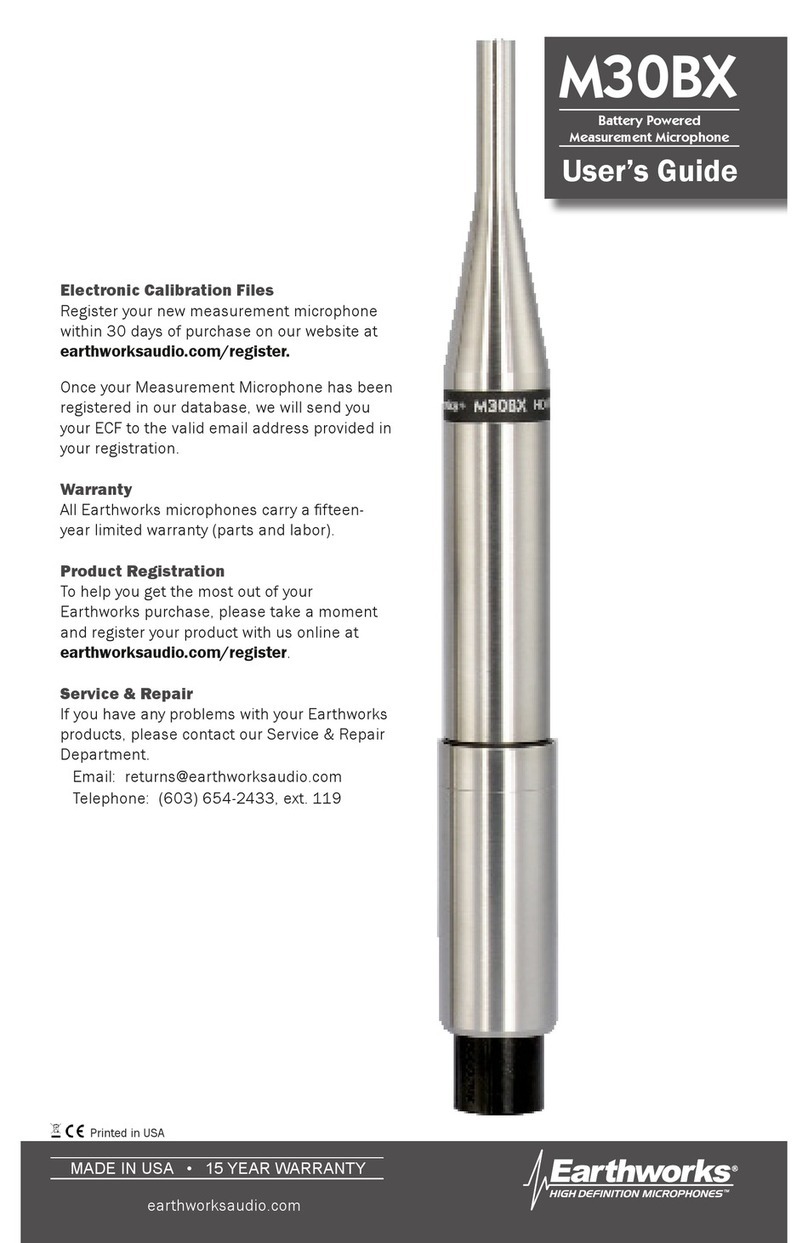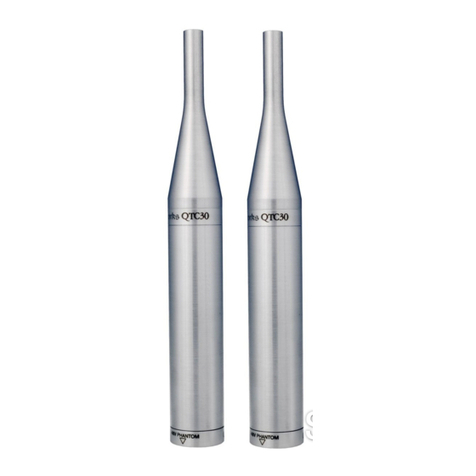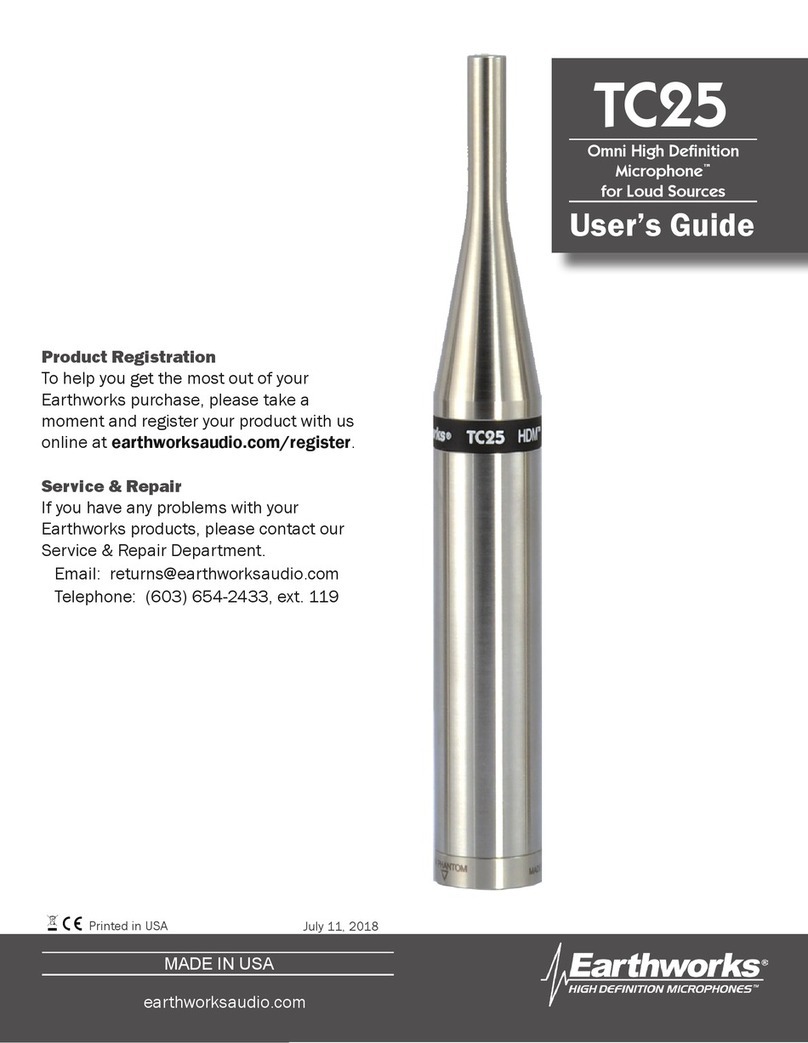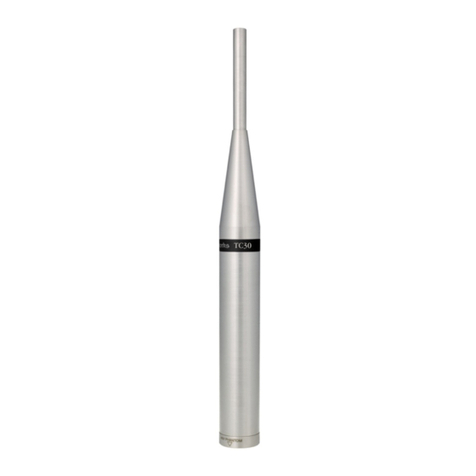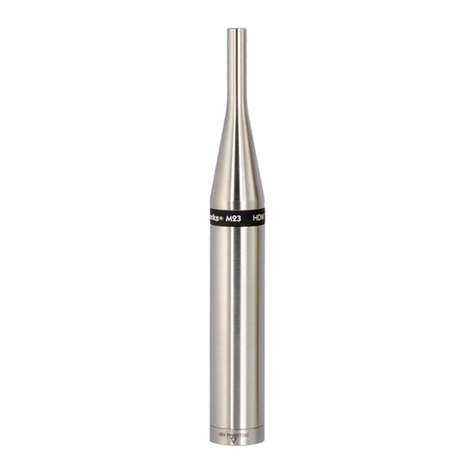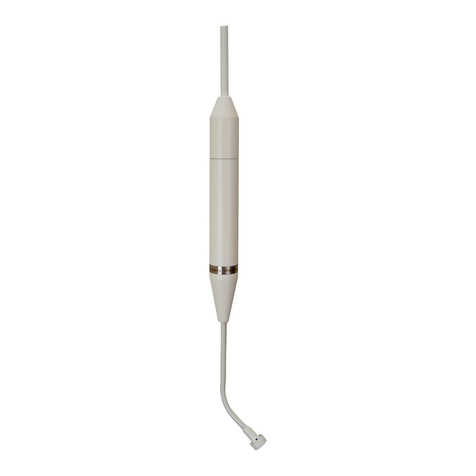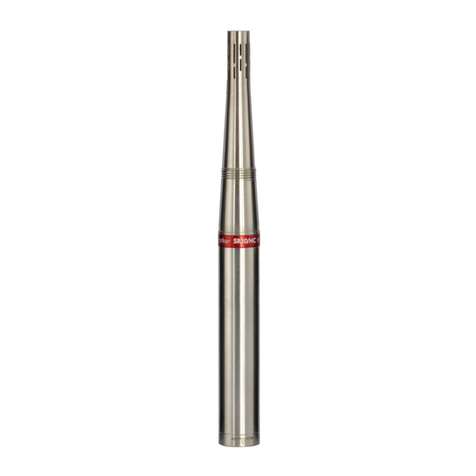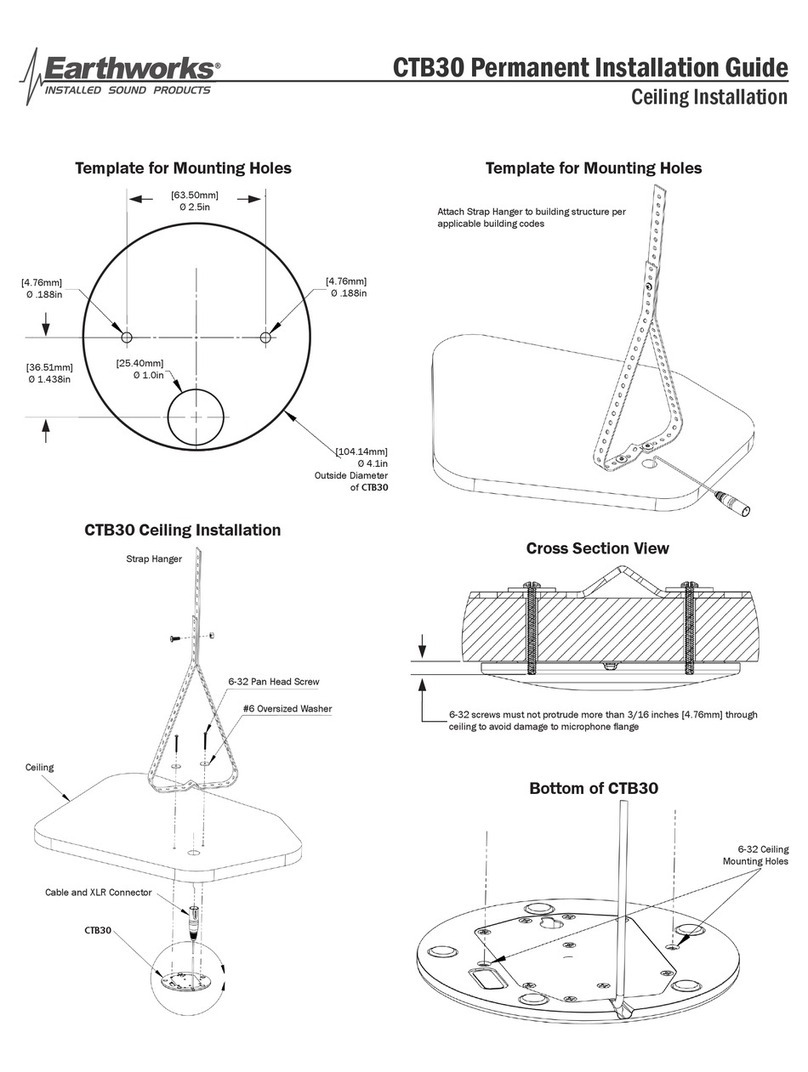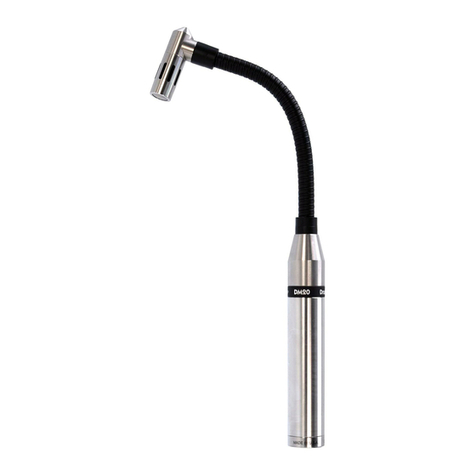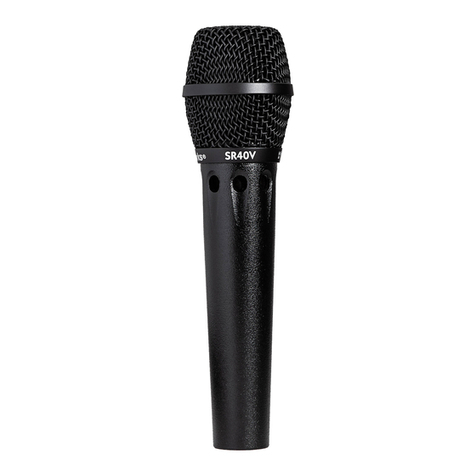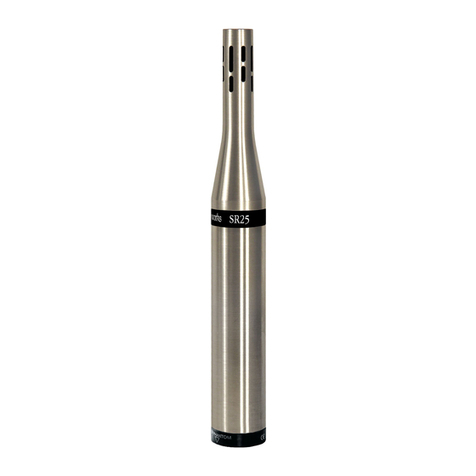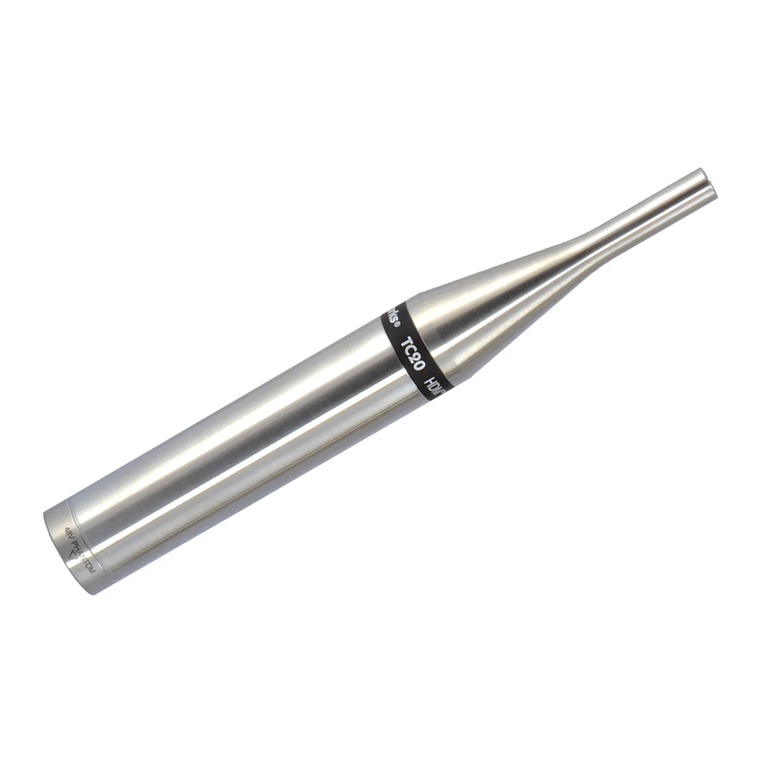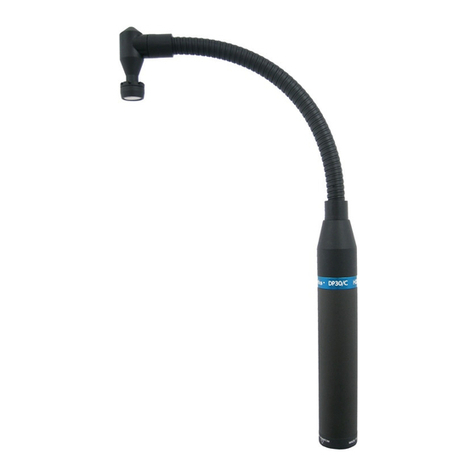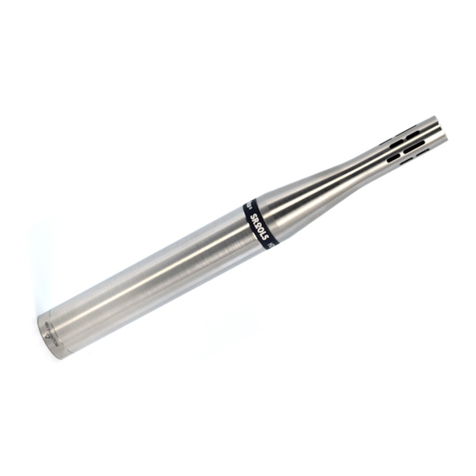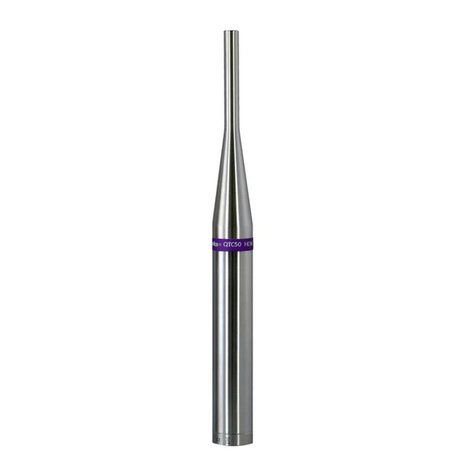settling time is exceptional, resulting in very
natural and uncolored sound.
This microphone has no removable parts.
Care of Microphones
Earthworks QTC40 microphone is a precision
instrument designed and built to provide years
of top performance. Following these simple
rules will help to protect your investment in
the QTC40:
•Avoidtouchingthefrontprotectivescreen.
•Neverattempttodisassemblethemicro-
phone – it cannot be opened.
•Avoidextremeheatandcondensinghu-
midity.Allow the microphone to warm
up in the case when bringing it in from
the cold weather.
•Roughhandlingmaydamagethemicro-
phone even if no visible marks are left.
•WhennotinusekeeptheQTC40initscase
Specications
Frequency response: 4Hz to 40kHz ±1dB
Polar Pattern: Omnidirectional (Fig. 4)
Sensitivity: 30mV/Pa (Typical)
Power Requirements: 48V Phantom, 10mA
Peak Acoustic Input: 142dB SPL
Output: XLR-3 (Fig. 1)
Output Impedance: 100Ω, balanced
(50Ωea. pin 2 & 3)
Minimum Load: 600Ωbtw. pins 2 & 3
Noise: 22dBA equivalent
Dimensions L x D: 9 x .860 in.
(229 x 22mm)
Weight: .5lb (225g)
Compliant
Description
Earthworks QTC40 is an omnidirectional
(pressure) pre-polarized condenser micro-
phone directly coupled to a dedicated wide-
band, low output impedance preamplifier.
The QTC40 requires a standard 48V phan-
tom power supply. It features an extended
linear free-field frequency response from
4Hz to 40kHz (Fig. 2), extremely fast im-
pulse response (Fig. 3), low self-noise, very
low handling noise, uniform polar pattern,
and high SPL handling capabilities. It exhib-
its no proximity effect.
Each microphone is delivered with its own
calibration chart providing the individu-
ally measured frequency response curve. A
mounting clip is included with the micro-
phone.
Applications
Earthworks QTC40 is easy to operate. Con-
nect the microphone to a microphone pre-
amplifier supplying 48V phantom power us-
ing a standard XLR microphone cable.Please
allow up to one minute for the microphone
to settle. Plugging in the microphone “hot”
(phantom power already present at the in-
put) will not damage the microphone, and is
actually preferred for faster settling. It is nor-
mal for any phantom powered mic to “pop”
when plugged in or powered up. Make sure
to mute the signal to speakers or headphones
when phantom power is first applied.
The QTC40 is designed for recording quiet-
er sources such as vocals, strings, woodwinds,
and distant-miked orchestras or choirs. For
classical location recording a matched pair
will provide spectacular results. It is ideal for
quieter, more detailed sources and does not
have most of the problems and limitations
generally associated with competitive micro-
phones. Its impulse response and diaphragm
Fig 1. XLR Output Connector Assignment of QTC40
Fig 3. Impulse Response (Typical) of QTC40
Fig 4. Polar Response (Typical) of QTC40
Fig 2. Frequency Response (Typical) of QTC40
Specications are subject to change without notice.
Version 3, July 7, 2011
